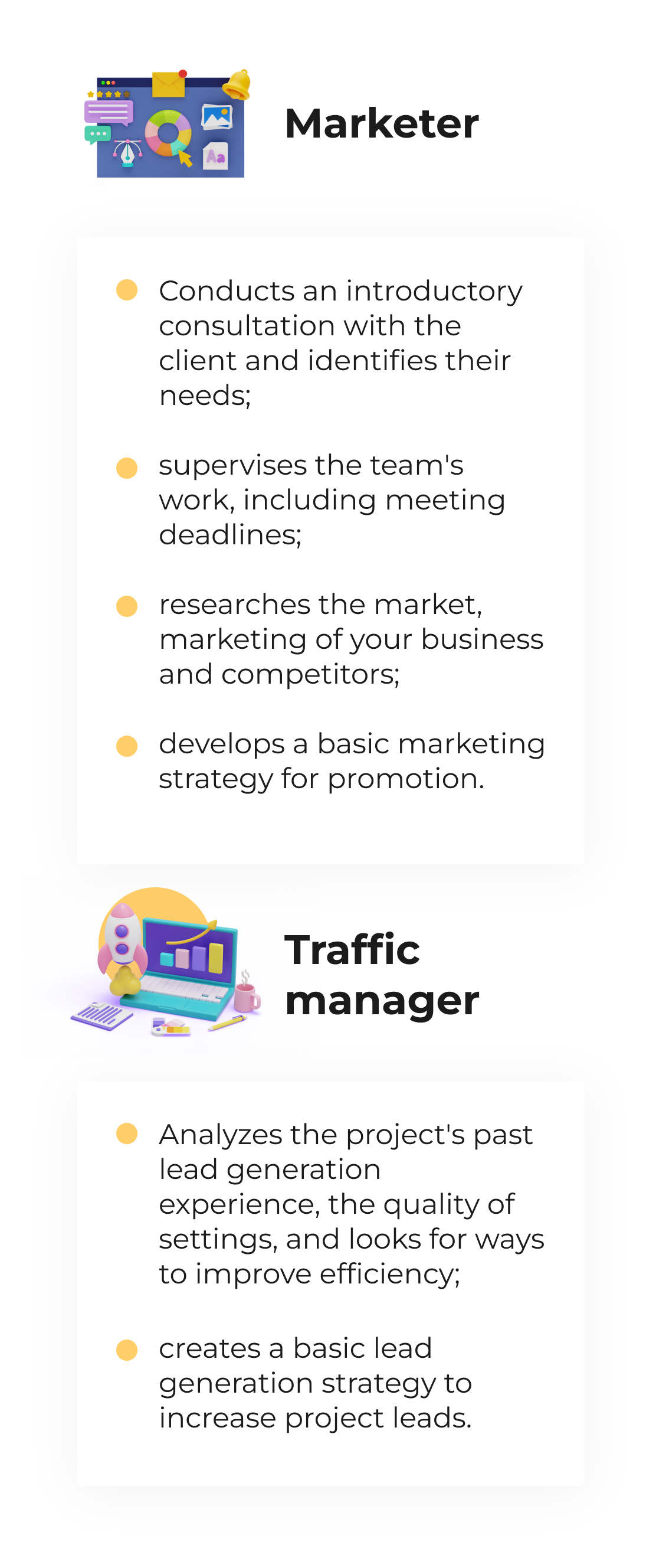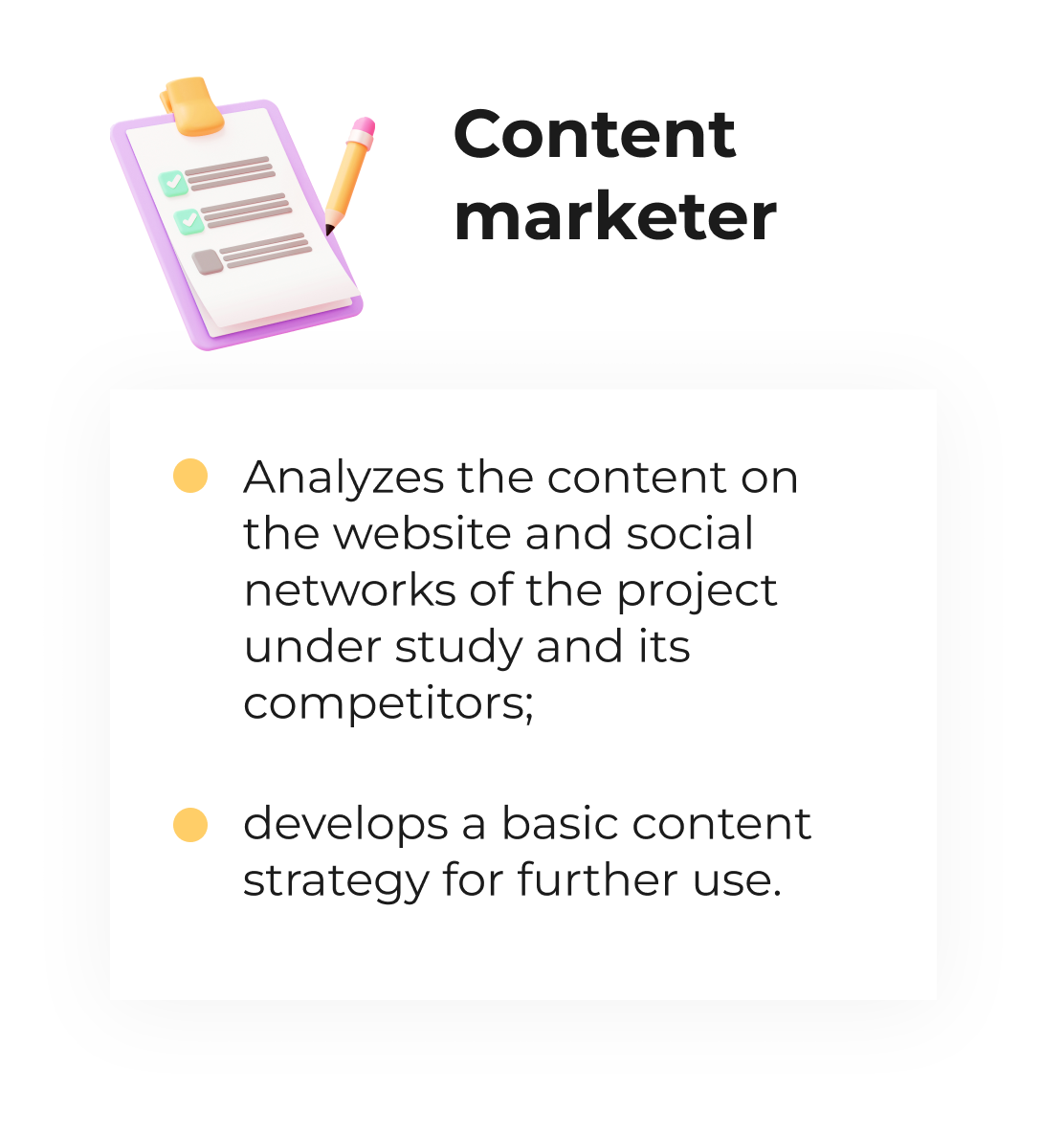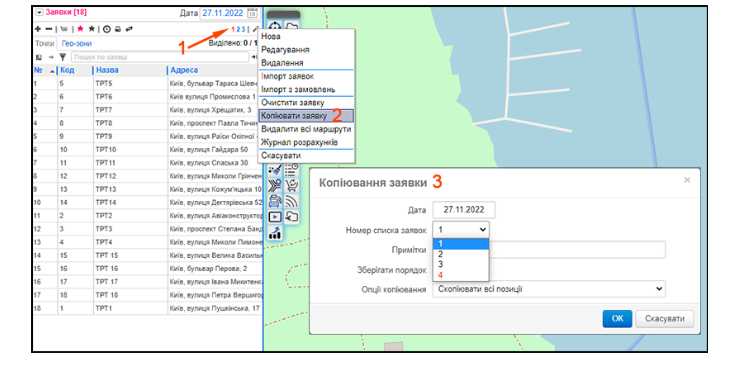Physical Address
304 North Cardinal St.
Dorchester Center, MA 02124
Physical Address
304 North Cardinal St.
Dorchester Center, MA 02124

Your company has been on the market for a long time, but has stopped at a certain level of development? Is your existing marketing not bringing the expected results, and your investments are not paying off as you would like?
If you are facing such problems, the first thing you need to do is analyze the effectiveness of your current marketing tools. It’s important to identify key growth points for your business and develop a promotion strategy that will help you realize them. To do this, we recommend conducting a marketing analysis that will allow you to make the right business decisions based on specific data, expert opinions, and recommendations from professional marketers.
For clarity, we offer you to familiarize yourself with our case study, where we will tell you how our remote marketing department conducts a marketing analysis for a business that has been on the market for a long time and is still striving for development. Our project is a Saas solution designed to automate and optimize transportation logistics. Sit back and let’s go!
The project manager is Krystyna Gladunova.
Our service is a remote marketing department: marketing analysis.
To conduct a marketing analysis, we form a team of specialists who can fulfill the tasks.


The specifics of conducting a marketing analysis will differ depending on the stage of the project — an idea, a startup, or a business that has been operating on the market for a long time.
That’s why we always hold an introductory consultation with the client first, after which they fill out a brief. This allows us to better understand their business, product, and needs.
This time, we’re going to tell you about our client, a cloud-based service for generating requests and building routes for transport logistics departments of companies of various sizes and industries.
He contacted us with the following request: to find the growth points of his business and create a marketing strategy that would contain expert opinions on:
Before proceeding with the marketing analysis, we identified the main problem of the target audience that the service solves: optimizing business processes and transport logistics costs, speeding up and facilitating the work of the logistician.
We also identified its key advantages:
After we learned more about the service and the client’s needs, we needed to change our focus. Therefore, we proceeded to analyze the existing marketing tools used in the project and on the market. This helped to formulate a promotion strategy for our client that would really work.
One of the client’s needs was to find promising markets to scale their business. Therefore, we analyzed them, in particular, assessed the existing demand and trends there.
In order to increase the conversion rate of the website and identify problem areas, we analyzed it and followed the path of a potential client.
After that, we compiled a list of comments and recommendations for website optimization.
We also analyzed the existing blog on the company’s website, as it is an ideal tool for demonstrating expertise and attracting users from organic search through SEO optimization.
Here are some of the recommendations in this area that we outlined in the marketing analysis:
Example: TMS section:
— What is TMS and what are they for?
— tasks solved by TMS;
— criteria for choosing a TMS;
— TMS cost: what it depends on;
— tips from TMS experts.
For example, a useful checklist or a free consultation. It is worth describing in more detail the benefits it will provide to the user.
Currently, the images that are available are difficult to see.

Competitor analysis should not be underestimated, as it is a great opportunity to learn from their experience, identify the weaknesses and strengths of your business compared to theirs, and develop a strategy to rebuild from them.
That’s why we analyzed competitors’ websites as one of their key sources of sales, namely, we studied:
Thus, during the marketing analysis, we found that the largest of them is actively engaged in social networks Facebook, Youtube and Linkedin.
In general, the competitor research made us realize 3 important things:
We won’t stop reminding you that social networks have a huge number of registered users. It is worth remembering that each business has its own target audience. Therefore, neglecting recommendations on how to promote your business on social media means losing part of your income.
Therefore, immediately after analyzing the websites, we started to study the social networks of our client and its competitors.
At the time of the marketing analysis, the project had Facebook and LinkedIn pages, as well as two YouTube channels.
We analyzed each of these promotion channels and made recommendations. They concern content creation in general, as well as the design and maintenance of company pages in accordance with the specifics of each social network.
Given the peculiarity of the logistics niche, you should not create content too often. The optimal amount would be, for example, 2-3 articles and 4-8 social media posts per month. But it should be up-to-date, informative, and expert.
Implementation of these recommendations will provide businesses with an influx of new customers and increase conversion to sales, as well as recognition and loyalty through competent social media marketing.
Our task was to clarify how to improve lead generation, i.e. increase the number of leads and optimize advertising costs. To do this, we analyzed the project’s traffic and lead generation.
For example, we found out that over the past six months, the monthly traffic of the site has been X thousand visitors, of which:
34 % — direct traffic
33% — paid Google traffic
22% — organic traffic from Google
Instead, according to Google Analytics, the company receives the most targeted traffic from direct visits to the website and from organic (search) traffic.
As you have already understood from the story above, only Google ADS was used among the paid channels, but the use of this tool cannot be called quite effective.
We’ve told you more about what can be improved in lead generation using the example of existing advertising campaigns. For example, we analyzed a YouTube campaign and clarified that people who saw the ad were interested in the offer, but after watching the video, it did not motivate them to order the service. It is also worth noting that in 87.89% of cases, people immediately left the website page, which indicates that the headlines and USP were not well written.
In this case, we recommend simplifying and making the video concept more interesting, as well as clearly indicating in the text of the ad how the company differs from its competitors.
In addition, we also analyzed the traffic of competitors and found out that they have search traffic — the use of paid advertising and SEO promotion.
This also includes referral traffic from links posted on third-party partner sites: in catalogs, ads, forums, links in published articles, reviews, testimonials, etc.
However, they do not use traffic from social networks and mailing lists.
After conducting the research on the project, market, and competitors, we confidently proceeded to create a basic strategy, which included:
We described each of these areas in more detail and provided additional recommendations.
In addition to these areas in the basic marketing strategy, we also answered one of the client’s key requests — which markets are the most promising for this company.
Unfortunately, today’s realities are such that Ukrainian business in most areas is experiencing a decline and too much competition.
Therefore, we believe that the most promising way forward is to actively enter new markets. This can and should be done in parallel with improving the packaging and the product itself.
As a result of conducting the marketing analysis for a cloud-based transportation management system, the following was done:
Market research
Basic strategy